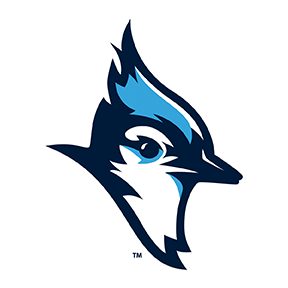Creating a budget is a common household task. Many families do so on an annual basis, enabling them to revisit changing needs, objectives, revenue and expenses. The same goes for the Arkport Central School District, simply on a larger scale. When district administrators begin the budget development process, they must consider many similar factors: student needs, goals and objectives, what the district can afford, what can be sustained over time, funding and expenditures. District leaders must also take into account factors they do not have direct control over but can have a significant impact on the general operating budget for the 2023-24 school year. Several of these factors are outlined here:
Enrollment trends
Enrollment is the starting point for all budget development work. How many students the district will have and where they are in the Arkport school system drives many of the budget decisions district administrators make. Over the past five years the district has experienced enrollment growth, however those trends seem to be tapering. In the current school year, the district has seen a decrease of approximately 20 students, primarily in the elementary grades. This downward enrollment trend is one that many districts across the state are experiencing and can possibly be attributed to falling birth rates or repercussions of the COVID-19 pandemic.
While Arkport’s enrollment numbers remain strong, it’s responsible to continually evaluate staffing levels. The decrease in enrollment has a direct correlation to the budget determinations for the district. The majority of state education funding is determined by enrollment; therefore decreasing enrollment numbers result in a decreasing budget.
The end of federal COVID aid
In response to COVID-19, the federal government passed various bills to assist school districts across the country in addressing the needs associated with the pandemic. These temporary funds are separate from and outside of the general operating budget and could be used for non-recurring interventions to enable districts to respond to students’ academic, social and emotional needs. Using American Rescue Plan (ARP) dollars, Arkport CSD addressed academic learning loss, social and emotional learning and improvements to health, safety and technology. Now that the sunset of these temporary COVID-related federal funding streams is approaching, Arkport administrators may need to eliminate some of the short-term programs that were funded by these federal dollars.
Increasing costs in several categories
There’s no denying the rate of inflation is high, which is driving up the price of daily essentials, such as food, fuel, insurance and transportation costs. This affects Arkport households and the school district alike and can impact nearly every area of the general operating budget. Historically, the consumer price index and the allowable tax levy growth factor have been fairly similar. During the 2021-22 school year, this trend changed when inflation spiked to 8% while the tax cap was at 2%. This jump in the rate of inflation is significant because, just as families’ budgets have been affected by rising costs, so have the district’s. Here are just a few of the budget categories subject to the ramifications of high inflation.
Materials: Eggs, bread, butter and other food staples have seen double digit increases in prices, making it more costly for the Arkport CSD to serve school breakfast and lunch. In addition, the cost of textbooks, classroom materials and printing are other areas that have seen considerable increases.
Energy: Energy is a substantial component of a district’s budget. Our school buildings need to be heated and powered and our buses must be fueled to transport students. The cost of diesel, natural gas and electricity are dependent on many factors, including market prices and global events. These costs have increased significantly within the last year, greatly affecting the district’s general operating budget. Much like a household budget, increases in energy expenses can put pressure on a school district to make required cutbacks in other areas of the budget.
Health Insurance: Another category seeing noteworthy increases statewide is the cost of health insurance. During the COVID-19 pandemic when people did not visit doctors, health insurance expenses declined. Now that restrictions have been lifted, these costs have rebounded, driving the price of health insurance premiums up across New York state. For the 2023-24 school year, the Arkport school district will see a 16% increase in the cost of health insurance for personnel.
BOCES Costs: The district offers many Career and Technical Education opportunities for Arkport students through the Greater Southern Tier BOCES. These programs enable students the opportunity to pursue traditional trades, licensed professions and honors-level and college-level programs. While a valuable component of an Arkport education, offering these programs comes at an increased expense to the district.
What Arkport is doing to address these budgetary factors
“What can we afford?” It’s a question many families in our community have had to ask and it’s often met with some difficult answers. The Arkport Central School District recognizes and is respectful of this; district leaders have posed the same question many times during the budget development process and are also facing difficult decisions. Just as families have had to tighten their belts and make budgetary cuts, so has the district. The district is working to maintain programs and services that meet the ultimate goal of continuing to offer robust and varied opportunities for Arkport learners, both in and out of the classroom, while also remaining fiscally responsible to our community.

